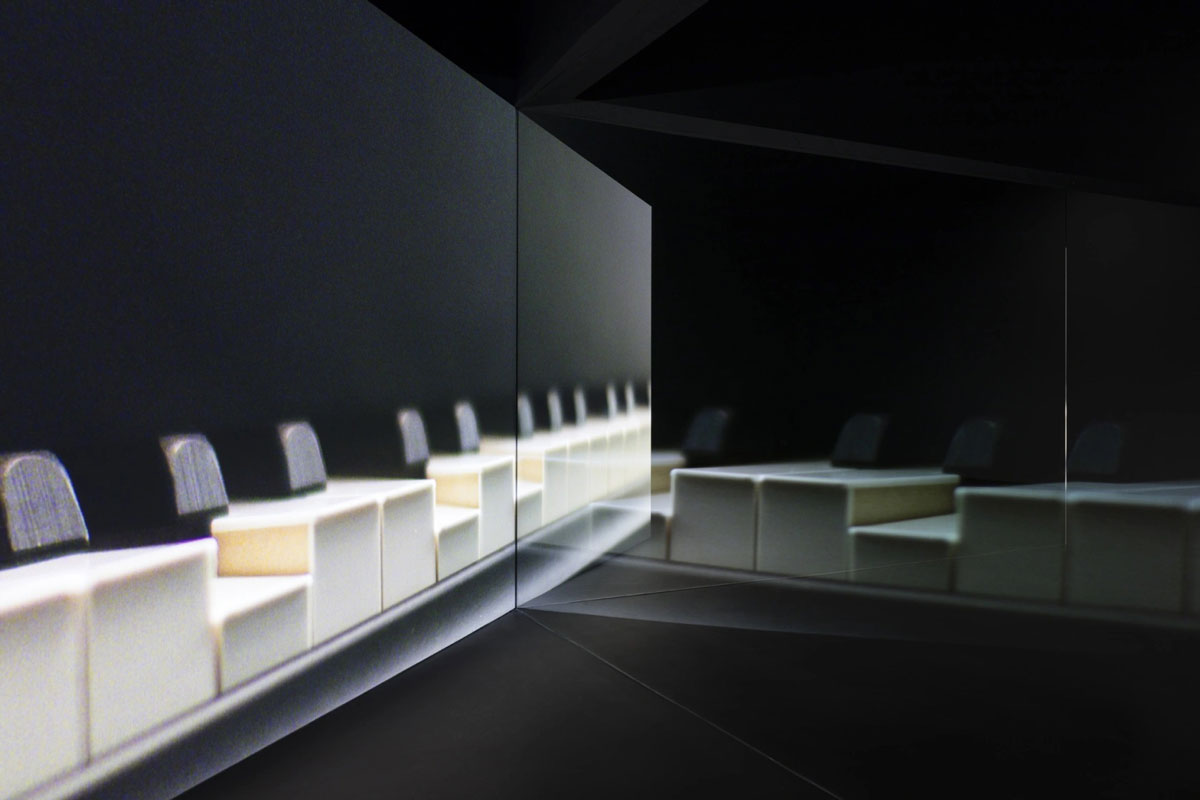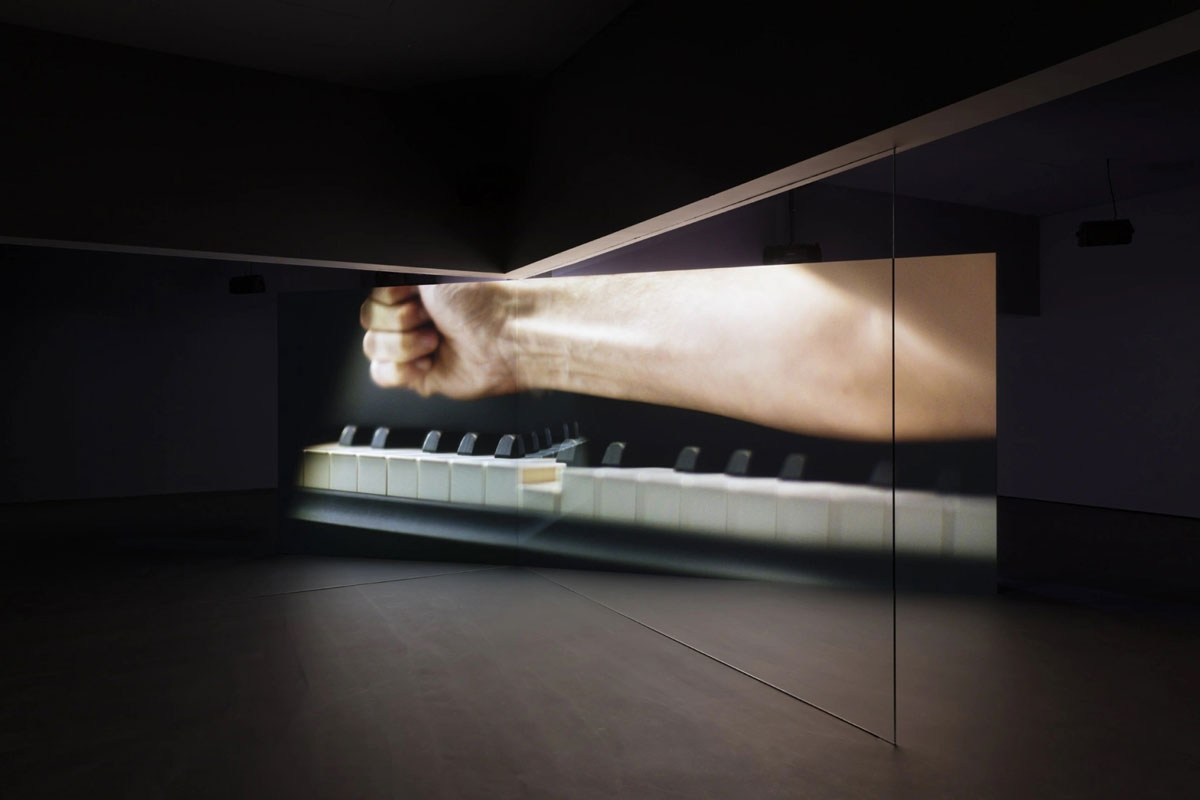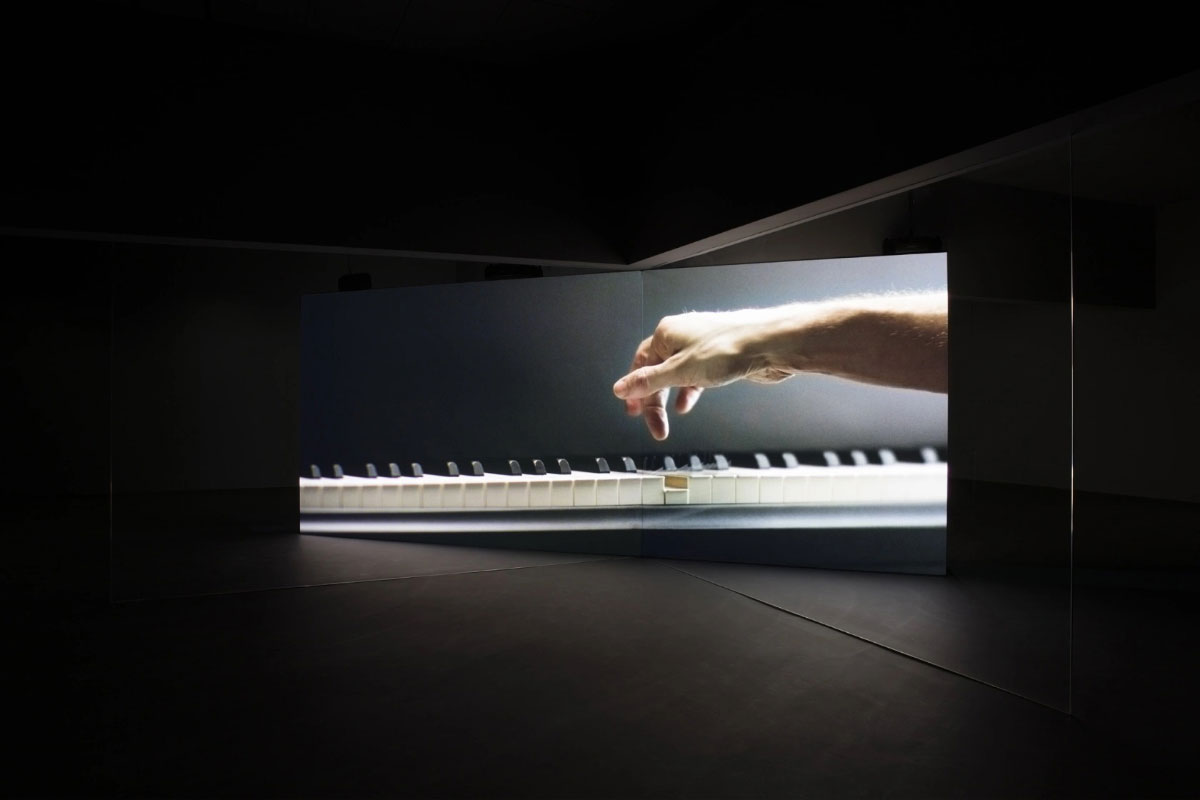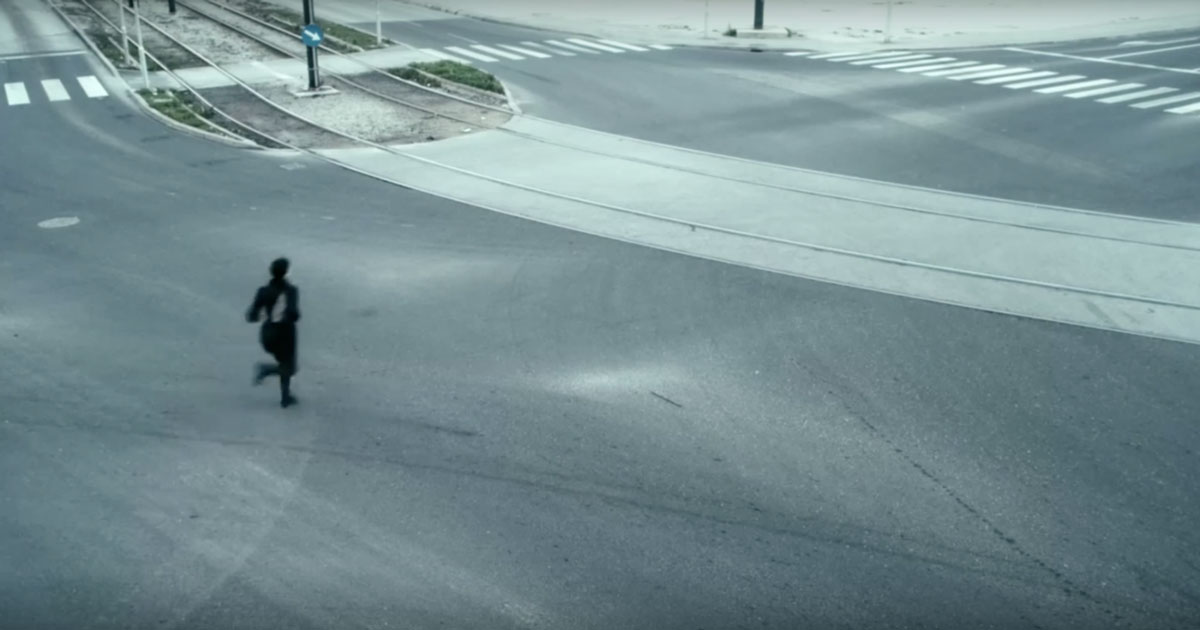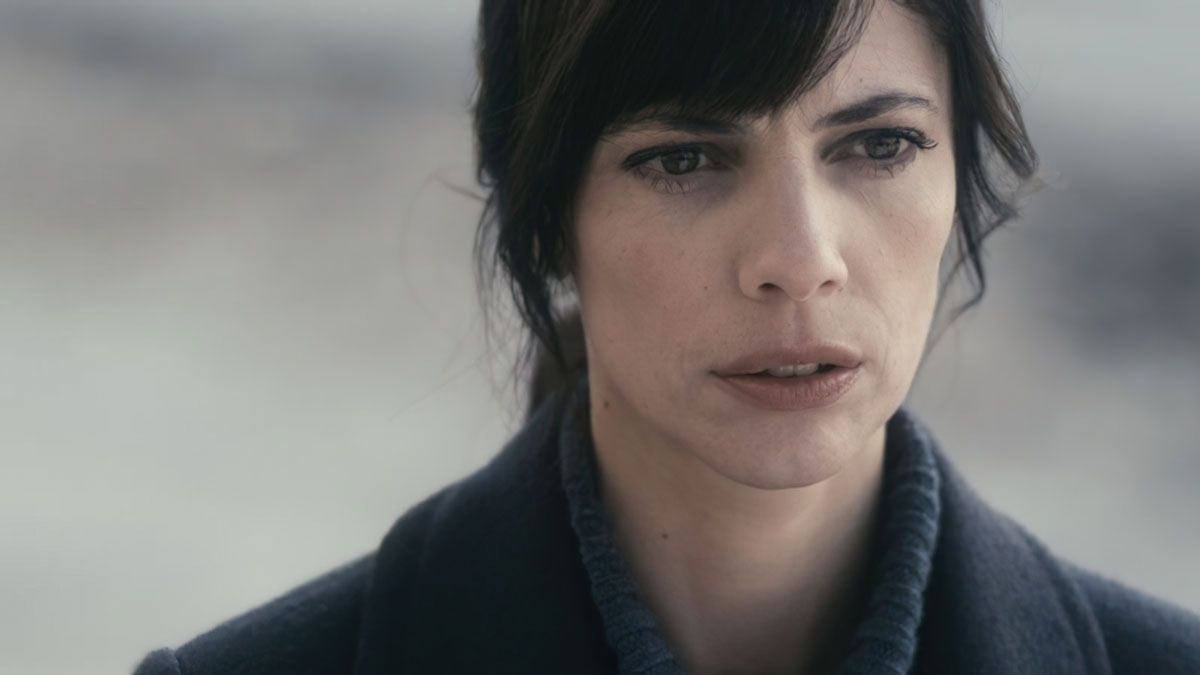PRESENTATION: Anri Sala-Time No Longer
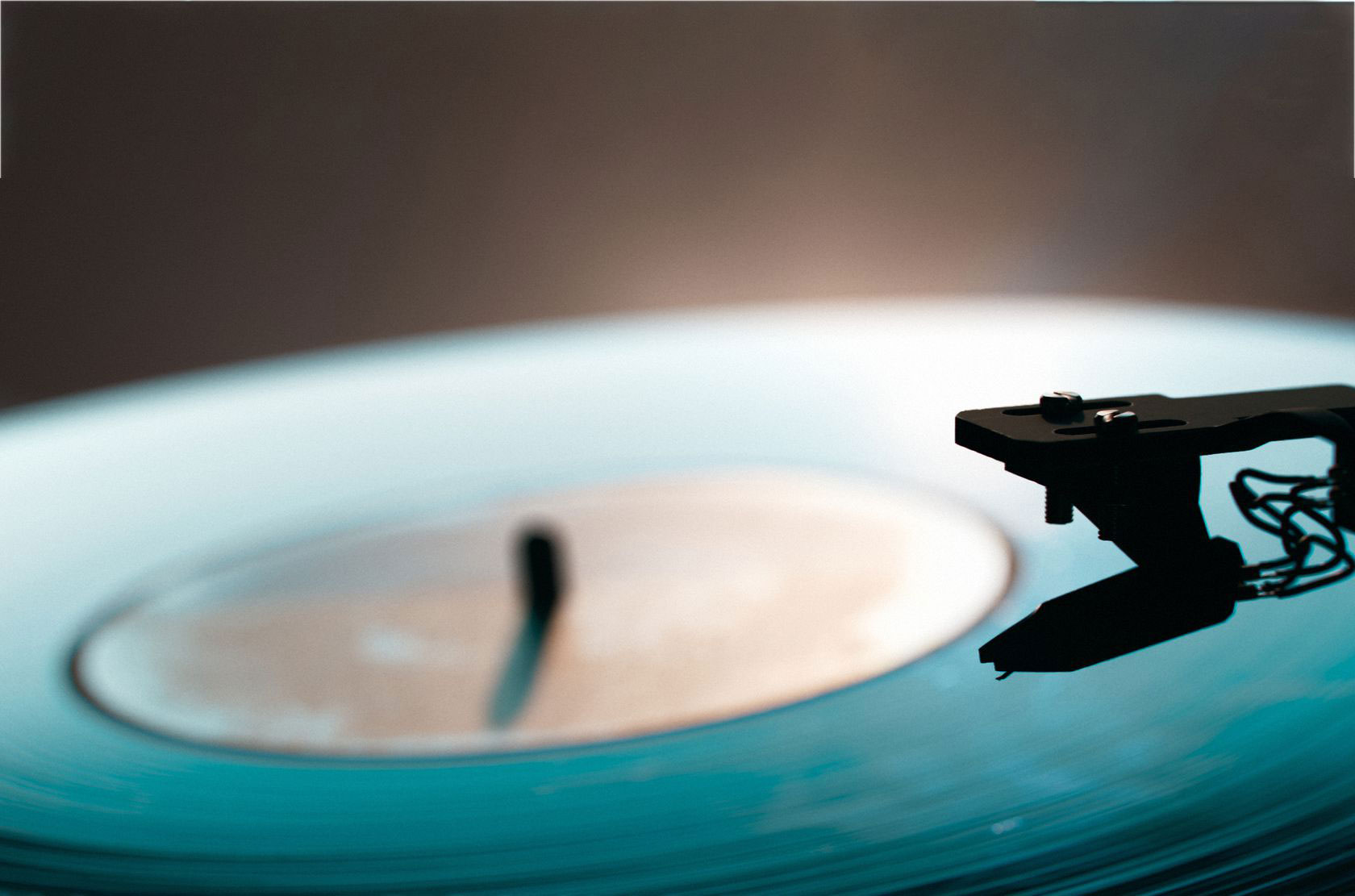 Anri Sala’s transformative, time-based works are constructed through multiple relationships between image, architecture and sound, utilizing these as elements to fold, capsize and question experience. His works investigate ruptures in language, syntax, and music in order to validate or invalidate narrative and composition, inviting creative dislocations which generate new interpretations of history, supplanting old fictions with new, less explicit, and less duplicitous ones.
Anri Sala’s transformative, time-based works are constructed through multiple relationships between image, architecture and sound, utilizing these as elements to fold, capsize and question experience. His works investigate ruptures in language, syntax, and music in order to validate or invalidate narrative and composition, inviting creative dislocations which generate new interpretations of history, supplanting old fictions with new, less explicit, and less duplicitous ones.
By Efi Michalarou
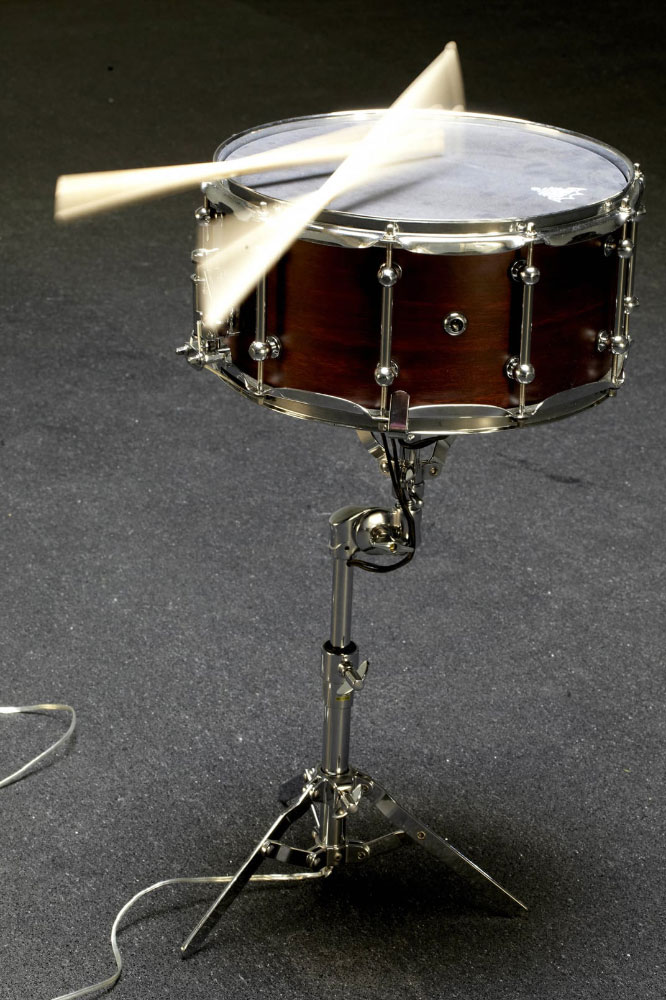
Anri Sala, Another Solo in the Doldrums (Extended Play), 2011
Anri Sala presents the work “Time No Longer” (2021) at the Bourse de Commerce-Pinault Collection. For its first presentation in France, this recent film is projected onto vast, curved screens—perfectly marrying the Rotunda’s cylindrical forms. Anri Sala’s work also in invest the display cases in the passageway around the Rotunda and in the Gallery 2 space on the ground floor of the museum, as well as in the basement, with iconic pieces by the artist taken from the Collection, including “Take Over” (2017), “1395 Days Without Red” (2011) and “Another Solo in the Doldrums (Extended Play)” (2012). “Time No Longer” incorporates a film with a soundtrack emanating throughout the space. The film depicts a weathered turntable floating in a space station, tethered only by its electric cord playing a vinyl record. There appears to be no human presence to listen to it, and an uneasy quiescence around it suggests it may be spinning in the aftermath of a catastrophe—a custodian of that absent humanity. With its own acrobatic intelligence, the tonearm moves from place to place on the record, the needle’s touch and rise resuming and ceasing its music. In a manner that seems not entirely at the mercies of gravity or chance, it continuously conducts itself. From its position in space, it observes 16 earthly sunrises and sunsets each day. The turntable plays a new arrangement of French composer Olivier Messiaen’s “Quartet for the End of Time (Abyss of the Birds)” that draws on the unique history of the quartet’s composition. During World War II, Messiaen was captured and incarcerated in Germany. While imprisoned he wrote “Quartet for the End of Time”, premiering it in 1941 to an audience of captives and guards. Scored only for instruments they could each play and find, this extraordinary piece of chamber music remains the most searingly haunting and memorable work composed through incarceration. Sala recognized in Messiaen’s elegiac piece not only a sense of overwhelming loneliness at a time when the world’s crises seemed insurmountable, but also the need to bring something into that numbness. Sala found a natural complement to this isolated clarinet in another remarkable musical event, the story of Ronald McNair’s saxophone. McNair, one of the world’s first Black astronauts, was also a musician who planned to play and record a saxophone solo on board the Space Shuttle Challenger in 1986. This would have been the first original piece of music recorded in space had not that journey been tragically curtailed. Sala felt that composing a saxophone part for Abyss of the Birds would subtly re-envisage a piece that was never played where it was intended, forming an imaginary duet between two instrumental voices.
“Take Over” are two well-known musical works, affiliated by an entangled political and cultural history, the Marseillaise and the Internationale. Written in 1792 the Marseillaise was closely tied to the French Revolution but also quickly spread to other countries where it became a symbol for the overthrow of oppressive regimes. Thus the 1871 lyrics of the Internationale were initially also set to the tune of the Marseillaise, until 1888 when its original music was composed and the song became the standard anthem of the socialist movement. Both anthems have undergone major changes in their political connotations: from revolution, restoration, socialism, resistance and patriotism, to additional associations with colonization and oppression in the second half of the twentieth century (as national anthems of France and the Soviet Union, respectively). Yet to this day their meaning remains in flux, as the two songs continue to be appropriated. Take Over makes audible the close relationship of these two political anthems and mines the musical kinship for traces of this changing symbolic significance. “Take Over” first manifests as a contained architectural structure consisting of a central wall with angled glass panels. The two songs appear doubled in two complementary films. Each projected on one side of the projection wall, the films depict the keyboard of a Disklavier piano, played by a human player and animated by its programming. A variety of actions—rhythmic movements, single strokes, clusters, waves or bursts, transforms the keyboard into an animated landscape in black and white, of valleys and peaks.
“1395 Days without Red” is a cinematographic project by Šejla Kamerić and Anri Sala in collaboration with Ari Benjamin Meyers. Conceived, developed and filmed as a collaborative project, it resulted in two independent films, presented simultaneously, as two separate installations, for the first time at the Museu d’Art Contemporani de Barcelona (MACBA). The films are a unique opportunity to see how, having started with the same materials, the personal reading of each artist and their way of working—not only with the film material, but also the space—convey two completely different ways of understanding the same project. “1395 Days without Red” digs deep into the experience of the siege of Sarajevo, which took place from 5 April 1992 to 29 February 1996, a period when, according to the UN, the city’s inhabitants were reduced from 435,000 to 300,000. During this time, some 10,000 people were killed and over 56,000 were wounded by sniper bullets and exploding grenades. Thousands of homes and public buildings (including the university and the library, which housed over two million volumes) were destroyed in one of the longest sieges in European history. The two films show the trauma inflicted by the conflict on the people of Sarajevo. 1395 Days without Red is a journey to the past from the perspective of the present, through a series of daily routes in today’s Sarajevo, which recreate what was once known as ‘Sniper Alley’. A temporal journey referring to the universality of emotions beyond their geographical location and through a city’s collective memory. The siege of Sarajevo lasted 1,395 days. “Nocturnes” is a portrait of two men in a small French village. Denis, a former soldier hooked on video games, talks about his experience as a peacekeeper in the Balkans. Jacques, a director, now spends his time collecting tropical fish. Whether their stories are true or made up is not known, but juxtaposing them results in an intimate dialogue bringing a common solitude to light.
Photo: Anri Sala, Time No Longer, 2021
Info: Bourse de Commerce-Pinault Collection, 2 rue de Viarmes, Paris, France, Duration: 14/10/2022-16/1/2023, www.pinaultcollection.com/
